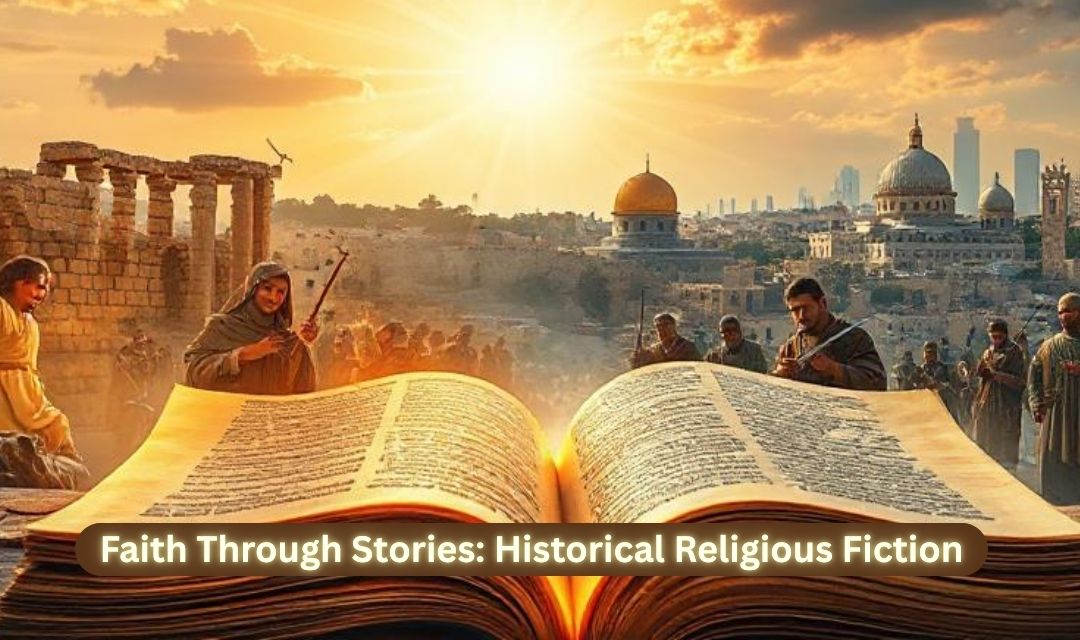Religious fiction has long served as a bridge between faith and imagination, helping readers wrestle with timeless spiritual truths while being immersed in compelling storytelling. Among its most impactful forms, historical religious fiction books stand out as powerful narratives that bring the past to life, offering fresh perspectives on faith, resilience, and the human journey. For modern readers, these works—whether standalone novels or part of a religious fiction book series—remain essential in shaping conversations about belief, culture, and hope.
What Defines Historical Religious Fiction Books?
At its core, historical religious fiction books combine well-researched historical settings with themes of faith, morality, and divine purpose. Unlike traditional history texts, these novels weave human drama into cultural, political, and religious backdrops. The result is a genre that not only educates but also inspires, prompting readers to reflect on how past struggles of faith mirror today’s challenges.
In the United States, where questions of spirituality intersect with modern life, these books appeal to readers seeking both entertainment and deeper meaning.
Religious Historical Fiction Books That Bring Ancient Stories to Life
Religious historical fiction books excel at breathing life into ancient stories, connecting readers with biblical, early Christian, or other faith-driven narratives. They transform scripture and tradition into dynamic, character-driven journeys.
For example:
- A midwife in ancient Jerusalem navigating exile.
- A Roman soldier questioning loyalty and faith.
- A community enduring persecution yet holding firmly to their beliefs.
Such portrayals help modern readers understand the endurance of faith across centuries, reminding them that the human experience of doubt, perseverance, and hope transcends time.
Why Religious Fiction Books Still Matter in Modern Faith Communities
Even as digital transformation reshapes U.S. culture, religious fiction books continue to influence faith communities. They provide a safe space for readers to explore difficult questions:
- How do we reconcile suffering with belief in God?
- What role does faith play during cultural upheaval?
- How do personal sacrifices shape communal resilience?
For church groups, Bible study participants, and individual seekers, fiction provides context and emotional resonance that theology alone cannot.
Fiction Religious Books vs. Religious Fiction Novels – Similarities and Differences
The terms fiction religious books and religious fiction novels are sometimes used interchangeably, but there are subtle distinctions.
- Fiction religious books often refer to any faith-driven narrative, including allegories or modern parables.
- Religious fiction novels typically provide longer, more complex plots, integrating character development with theological themes.
Both categories, however, aim to spark reflection and encourage readers to integrate faith into daily life.
Religious Fiction Novels That Blend Faith, History, and Storytelling
The most enduring religious fiction novels combine meticulous historical research with universal themes of belief and redemption. They stand apart not only because of their narrative craft but also because of their ability to balance historical accuracy with spiritual truth.
In today’s competitive book market, readers value novels that blend faith with compelling character arcs—stories that resonate whether you are a seasoned believer or simply curious about religious traditions.
Religious Fiction Book Series for Readers of All Generations
A religious fiction book series provides continuity, allowing readers to follow characters through multiple stages of life and faith. From ancient exiles to contemporary seekers, these series expand the scope of faith-based storytelling.
For multigenerational families in the U.S., such series create opportunities for shared reading and dialogue. They also reflect the enduring relevance of scripture-inspired narratives in an ever-changing cultural landscape.
William Copeland’s Exiled and Exiled – The Journey
William Copeland exemplifies this tradition through his novel Exiled, which draws inspiration from the biblical book of Habakkuk. Set during Jerusalem’s fall, the story follows a scribe, a midwife, a jeweler, and a father as they endure displacement and loss, anchored by faith.
The upcoming sequel, Exiled – The Journey, promises to deepen this narrative. Readers can expect more challenges, sacrifices, and triumphs as characters continue their journey of resilience. These works reflect Copeland’s lifelong dedication to faith, history, and storytelling—rooted in his personal experiences, academic background, and time spent on archaeological digs in Israel.
The Unique Appeal of Combining History with Religious Fiction
What makes historical religious fiction books uniquely appealing is their ability to humanize history. By blending archaeology, scripture, and lived experiences, authors like William Copeland provide a lens through which readers can see faith as both timeless and profoundly relevant today.
These books are not escapism—they are a form of reflection, offering practical wisdom for navigating hardship, maintaining hope, and fostering community.
Closing Thoughts – Lessons from Historical Religious Fiction Books
In the United States and beyond, historical religious fiction books serve as a testament to how stories shape faith. Whether read individually or in small groups, these narratives open space for dialogue, empathy, and spiritual growth.
From biblical-era characters to contemporary novels, the genre continues to evolve, bridging past and present. Authors like William Copeland remind us that faith is not confined to scripture alone—it lives on in stories, in imagination, and in the resilience of those who believe.
For readers seeking both spiritual depth and literary engagement, religious historical fiction books are more than stories; they are enduring guides for faith in a modern world.

